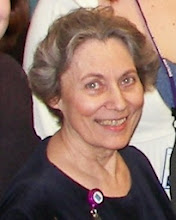To see and not to see (to borrow from Hamlet), that is the issue for today, so much contained in so small
an expression.
To See: involves
perception by the physical eye, to look, to view, as well as multiple levels of
knowing, understanding, insight, experiencing, to discovery, to visualize or
imagine mental pictures, to become aware, to recognize, to examine or watch, to
care for someone or something, to meet or visit, to grasp a new concept, to
inquire, to focus attention, just to mention a few common meanings.
And then there is Not-To-See: implies blindness, dimness, something hidden
or ignored, visionless, distorted, askew, blinkered, ghostly, blurred perhaps,
indistinct, invisible, concealed, mysterious, covert, undefined, veiled.
So you may well ask why this can be of interest. We take a walk, and we see things or think
about new ideas and these can spark insights and enjoyment. So what is the advantage of taking a walk and
not seeing the beauty of the world around us?
What is the asset in that?
Consider the case of the dominant eye. In a normal situation, we can assume that we
have two eyes capable of normal vision, and that they are arranged somewhat
apart on the face. And when an object is
placed in front of these eyes, each eye will send a separate image to the
brain, and the brain will resolve the two images into one (a stereo-optical,
dimensional image). You can see this for
yourself if you conduct a simple experiment:
Make a circle with your thumb and first finger. With both eyes open look
at an object on the wall or in the distance, and centre it inside the circle of
your fingers. Next, close one eye, and then the other. Notice that with one of your eyes, the object
jumps outside the circle. If the object seemed to move when you closed your
left eye, then you have left eye dominance. If the object moved more when your
right eye was closed, then your right eye is the dominant one.
How is this useful or interesting? Certainly, the part of the brain controlling
the image perception is using much of the information from the dominant eye,
and that is extremely useful in a practical way. However, even more interesting might be the
non-dominant image, of the space revealed when the eye “jumped” to the new position. Often new insights can be obtained by
considering the surrounding areas, the “context,” so to speak, of the main
subject. It can highlight relationships
which were not before apparent. It can
reveal new shapes and patterns between two apparently different or unrelated
things. We need to be careful that in
focusing too tightly, we don’t also lose the opportunity for creative insight. Often, the most interesting insights emerge in
that cross-over area where two different things rub together. That is where the spark occurs, where the
flash and excitement can be found. Where
the seeing and not-seeing come together.
Where creative insights live.
Some Words of Encouragement:
·
Stop every little while and notice what’s all
around. [CR]
·
Be sensitive to the rhythms of the unseen as
well as the seen, and wonder abut their meanings. [CR]
·
Some say the
world will end in fire,
Some say in
ice.
From what
I’ve tasted of desire
I hold with
those who favor fire.
But if it had
to perish twice,
I think I
know enough of hate
To say that
for destruction ice
Is also great
And would
suffice.

No comments:
Post a Comment